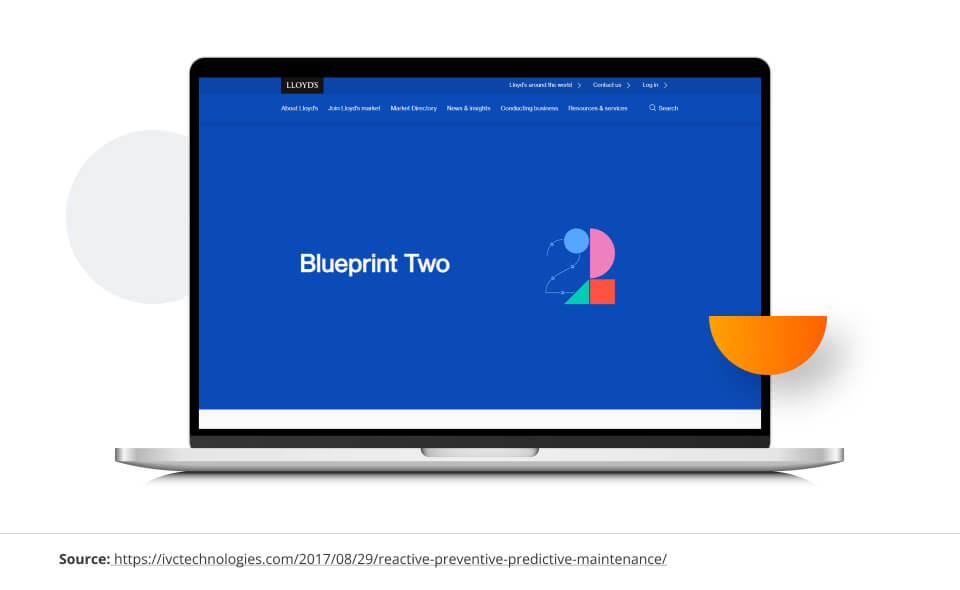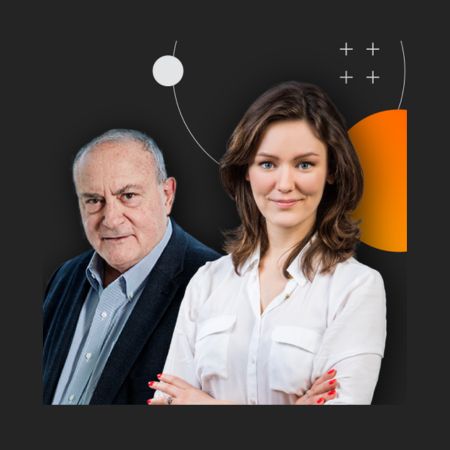
Lloyd’s of London – transforming the insurance landscape with Blueprint Two
With over 350 years of history, Lloyd's of London has established itself as the world's leading insurance marketplace. In this article, we explore how Lloyd's has transformed their operations by focusing on sustainability, resilience, inclusivity and innovation.
For more than three centuries, the Lloyd’s market has been sharing risk to protect people and businesses, inspiring them to create a braver world.John NealCEO, Lloyd’s
As part of our IT Insights InsurTalk series at Future Processing, we recently sat down for an interview with Bob James, Chief Operations Officer at Lloyd’s of London, to learn more about the history, current workings and future plans of one of the most esteemed insurance and reinsurance marketplaces in the world.
With over 350 years of history, Lloyd’s of London has established itself as the world’s leading insurance marketplace. More than ‘just an insurance broker’, Lloyd’s is a collective syndicate of market underwriters, brokers and companies whose combined industry intelligence and risk-sharing expertise helps Lloyd’s to provide relevant and innovative insurance solutions for customers all over the world.
Despite enjoying success for many years, Lloyd’s understands the importance of being proactive and staying relevant in an ever-changing world. The landscape of insurance broking and underwriting has changed significantly in recent years thanks to the worldwide digital transformation taking place, and Lloyd’s more than anyone understands the need to stay ahead of this curve.
In this article, we explore how Lloyd’s has transformed their operations by focusing on sustainability, resilience, inclusivity and innovation in order to build a braver future for the entire insurance industry, and delve into the insights shared in our latest podcast.
Future at Lloyd’s prospectus – Blueprint One
In May 2019, Lloyd’s of London released the Future at Lloyd’s prospectus, signalling its intention to transform and adapt for the next generation. The goal was to create a better marketplace overall that was more agile and could leverage technology, innovation and flexible capital to deliver exceptional products and services in the insurance sector.
Blueprint One key objectives
- Improving risk solutions for customers that adequately met their needs.
- Enhancing products and services for customers and capital providers.
- Streamlining operations and reducing costs by increasing efficiency.
- Fostering an inclusive culture where all participants feel valued and included.
These steps marked the beginning of Lloyd’s journey towards achieving its vision. By embracing change and prioritising customer-centricity, Lloyd’s aimed to establish itself as a more efficient, innovative and inclusive insurance marketplace.
However, Blueprint One wasn’t without its issues. It was found that customers sometimes found it hard to interact with Lloyd’s, making the overall experience less smooth and not as efficient as it could have been. Lloyd’s wanted to attract new capital into the market, but with some of the old processes being somewhat arcane, in addition to the pace at which the world was making its digital transformation, Lloyd’s needed to come up with a better solution. They needed to develop a more nimble, agile and comprehensive answer to these problems set by a fast-paced and unpredictable world.
The next steps in Lloyd’s digital transformation strategy
Finding a common data language
In order to transact business successfully, it’s important that everyone is ‘speaking the same language’. When we talk about ‘language’, we mean the language of data.
Lloyd’s understands the benefits of a common ‘Lingua Franca’ data language and has a clear vision for how it can benefit both their operations and those of the wider insurance industry as a whole.
The first key advantage is that the time it takes to service a customer will likely be reduced quite significantly, and with this time reduction will follow a cost reduction as well. This is great for the entire industry because companies like Lloyd’s can operate for less money and offer lower premiums to more customers with a cheaper, faster service.
The second advantage of using a common data language across the industry is that this data can be used to leverage information for product innovation. Companies will be able to analyse all of the data gathered and think of new and exciting ways to create new projects, products and tools that benefit everyone. With the ability to create more innovative tools, companies can expand their services to meet their customers’ needs in ways we could have only dreamt about previously.
Customer centrism is the most important factor in modern business and data is at the very heart of this. When we look at how world-leading companies like Amazon process their data in such a comprehensive and seamless way, it quickly becomes clear why they are giants in the industry. Customers have come to expect the hyper-fast and efficient service that Amazon and other similar companies offer, and Lloyd’s understands this. They know that gone are the days of printing information on paper and passing it along by hand. This type of operation takes time, slows down the whole process and costs more. The answer is digitalisation, automation and a common data language.
Long-term sustainability in the insurance industry
Like many other industries, the insurance sector can be wary when it comes to change and embracing new processes and technologies. There are inherent risks involved in changing the status quo, which makes enacting this change quite difficult. However, to become sustainable, Lloyd’s recognises that change is necessary.
In order to get a better understanding of how to create sustainable models in the insurance and tech industries, we can look at both how to improve existing distribution and underwriting models. How might we do this? By using data and technology. Data is once again at the very centre, whether it’s innovation, sustainability, customer services and so on, data is at the heart of everything.
Lloyd’s understands the need to harness data to create ongoing sustainability in the industry and this was a big driving factor in their latest initiative, Blueprint Two. Lloyd’s seeks to make the marketplace more nimble, more sustainable and accessible, and its goal is to remain at the forefront of this change.
By keeping pace with these changes, Lloyd’s can continue to attract capital, bring in new customers, and develop innovative products. Blueprint Two acts as a foundation for the future, enabling further growth and adaptation in the years to come through the digital placement of insurance, movement of premiums, and settlement of claims. Often coined as “Faster, Better, Cheaper”.
The challenges of transforming a syndicated marketplace
Making significant changes to any industry or market is no mean feat, but carrying this out in a syndicated marketplace is extremely difficult.
When we talk about a ‘syndicated’ marketplace, this means that there are multiple insurance brokers, agents or cover holders all servicing a single customer. When making any changes to their services, Lloyd’s has to consider about the entire placement whether a single insurer or a syndicated risk.
The key is to find the right balance between changing your operations and services to meet the modern marketplace’s demands and also transforming the marketplace. This is all to do with changing the way people transact business and their habits to move towards a more digital way to do trading.
Translating small business insurance benefits to large complex products
When customers go to smaller and more general business insurance brokers, they are likely to have the whole deal done and dusted within 5 minutes. Companies utilise AI tools to provide automated, seamless and instantaneous quotes that are extremely customer-centric. This is not possible for larger-scale insurance products, such as those offered at Lloyd’s.
The complexity of the bespoke nature of large-scale business insurance is such that there are many contributing factors that make it extremely difficult to match these instant risk decisions. However, this doesn’t mean that it will always be impossible to emulate and Lloyd’s is attempting to do just that with Blueprint Two.
For the immediate future, it might not be possible to match a 5-minute risk decision, but it might be possible to get that number down from a few weeks to just a few days using a common data standard, a digital submission gateway, as well centralised data storage. Even though it’s not perfect, it’s a definite improvement.
Looking to the future of Blueprint Two
The main aim of Blueprint Two is to provide Lloyd’s with a strong digital foundational platform from which to build upon. This foundation for the future is not the end of the digital story, but just the beginning. It is a strong and stable basis that can be used to affect change. The platform will include a common set of data that can be understood by Lloyd’s and its wider syndicate, and there will be a simple, digital way to make transactions. The result will be a reduction in cost, the average service time per customer will be reduced and there will be a much more improved ability to settle claims across the board.
Once these foundational elements are in place and working well, the next step will be to innovate. The marketplace will be thinking about how to innovate using common data and digital placement, finding new ways to bring customers and capital to the marketplace, and how to find new ways to use this data to develop products that don’t exist today.
Innovation is the key to remaining current, providing the best products and services, and staying ahead of a changing digital world. Lloyd’s Blueprint Two is just the first of many exciting innovative changes and projects that the company is working on, and looking to the future, Lloyd’s hopes to continue driving forwards as the innovator of change in the insurance market.
The next steps for the syndicates
For syndicates within the Lloyd’s marketplace, the next steps involve adapting their systems and processes to consume the common dataset generated through the digital transformation efforts. To this end, they are already using an industry set of data standards, so this is already one step in the right direction.
To be able to understand a fully universal set of data, all insurance companies, regardless of whether they are in the Lloyd’s syndicate or not, will have to be able to consume the data on their own systems along with any other data that they’re already collecting. This will lead to increased efficiency and streamlined operations.
However, the true value lies in leveraging this data, along with existing datasets, to make better risk decisions, serve customers more effectively, and drive product innovation.
Summary
Innovation and entrepreneurialism are the keys to success in the insurance marketplace. Through the Future at Lloyd’s program, Lloyd’s is embracing digitalisation, data standards and innovation to create a more sustainable, efficient and customer-centric marketplace. While challenges exist, a truly digital future is inevitable, and it is exciting as it presents opportunities for growth, product development and better customer experiences. Lloyd’s of London is laying the foundation for a brave and digital future through their initiative, Blueprint Two, and they are poised to adapt and thrive in an ever-changing insurance landscape.
If you would like to learn more about Lloyd’s of London, please follow this link to watch our recent IT Insights InsurTalk interview with Bob James.






